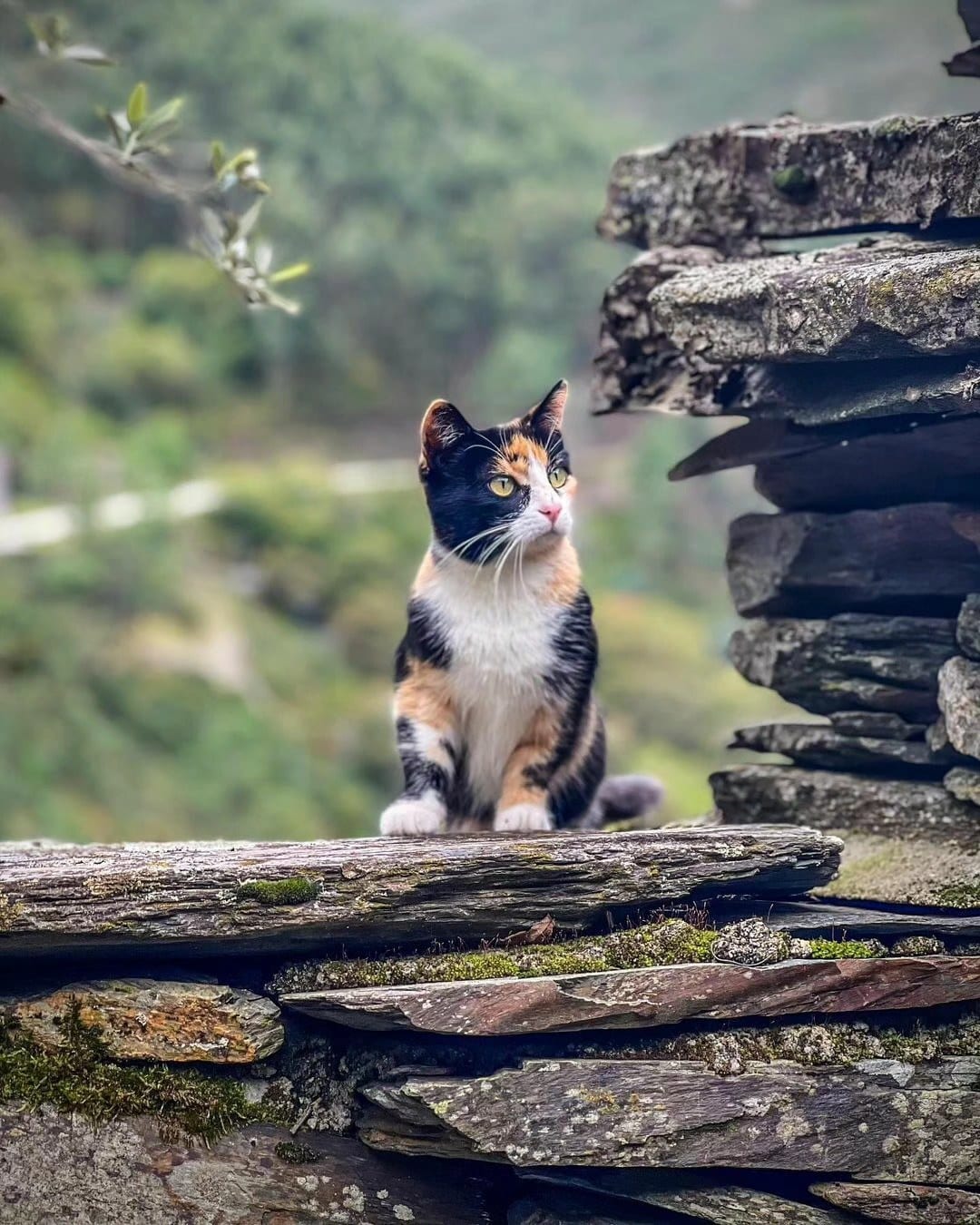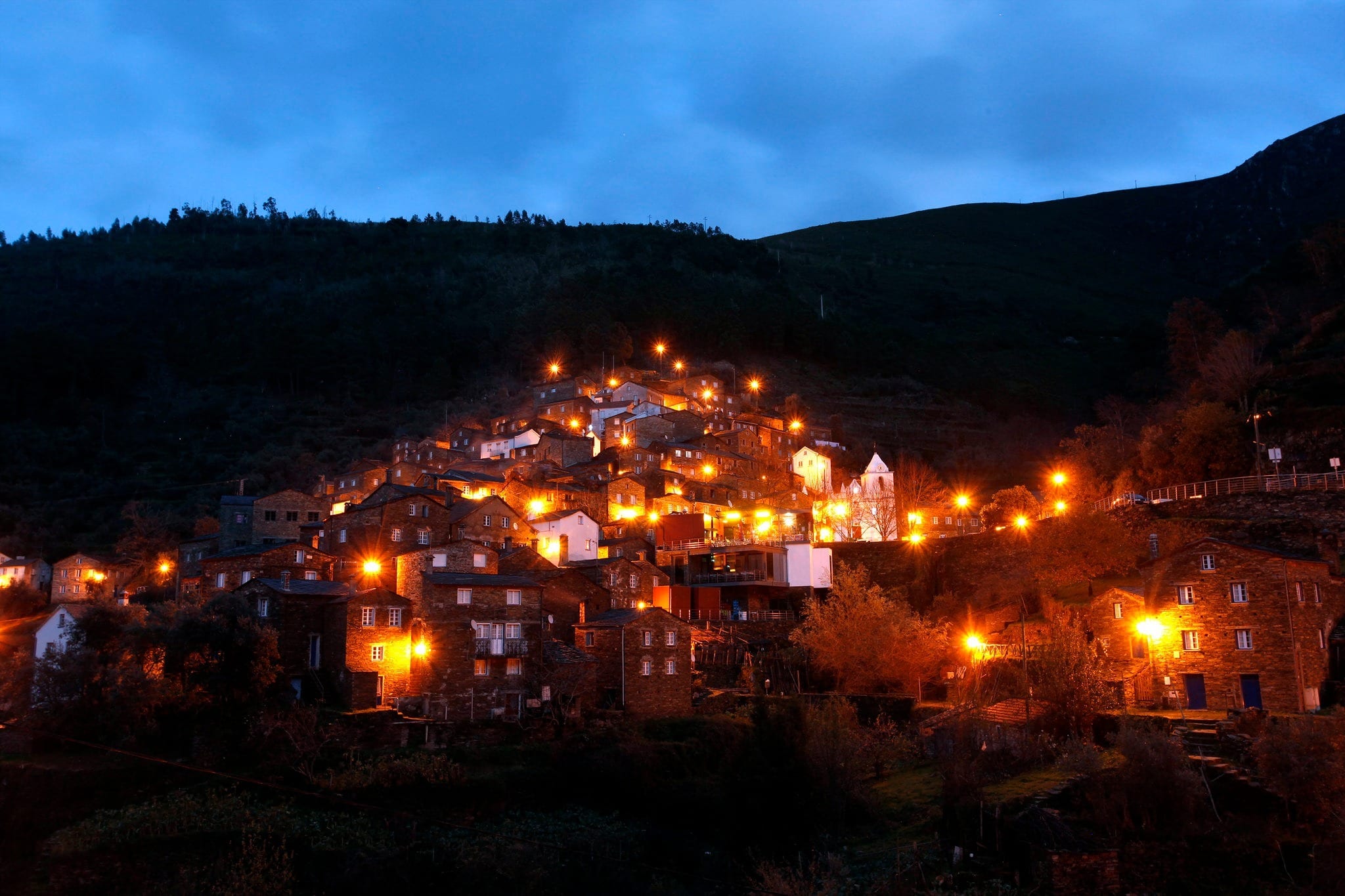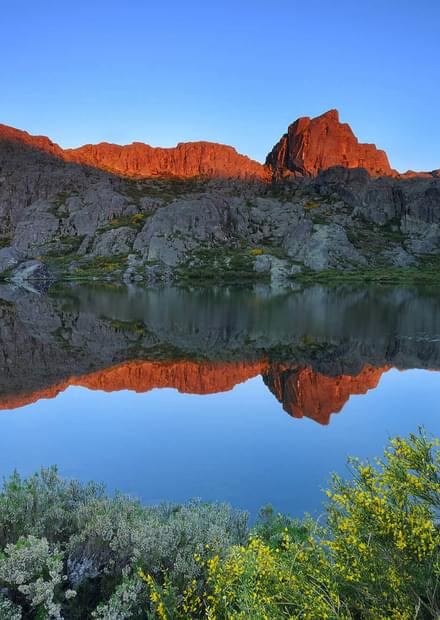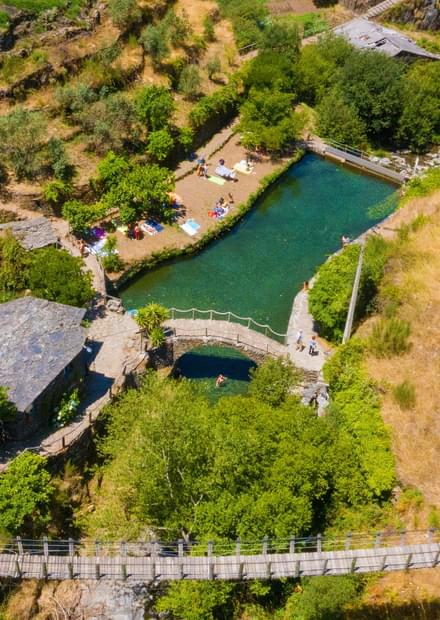Its schist houses with slate roofs, which blend with the irregular pavement of the streets and with the colours of the mountain, are connected by stairs which overcome the unevenness of the ground.
In the early middle ages, the urban centre was at Casal de Piodam, in a valley located near the current village, but this settlement had to be moved because a Cistercian abbey, of which nothing remains, was built on that spot. Taken away from their land, the inhabitants settled in the southern slope of the mountain, probably around the 15th century. It was there that, over time, ledge by ledge, they built this incredibly beautiful mountain village.
The isolation to which difficult access routes have condemned Piódão throughout many centuries, has resulted in the medieval feeling of its streets, so you should take a walk through its steep streets, climb stairs and slopes while visiting the schist houses which are sometimes interrupted by a white church. When you go back, you should take a typical souvenir of this village: chestnut liqueur, honey spirits or a schist miniature of one of Piódão’s typical houses.
In Piódão, you should visit:
The incredibly beautiful architectural ensemble
The matriz church
The São Pedro chapel
The Piódão museum





















